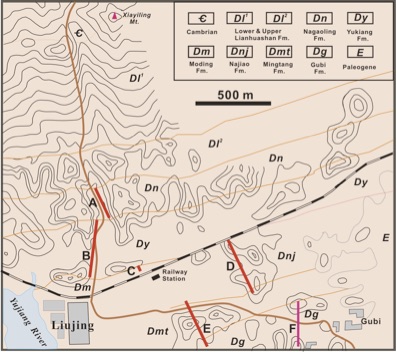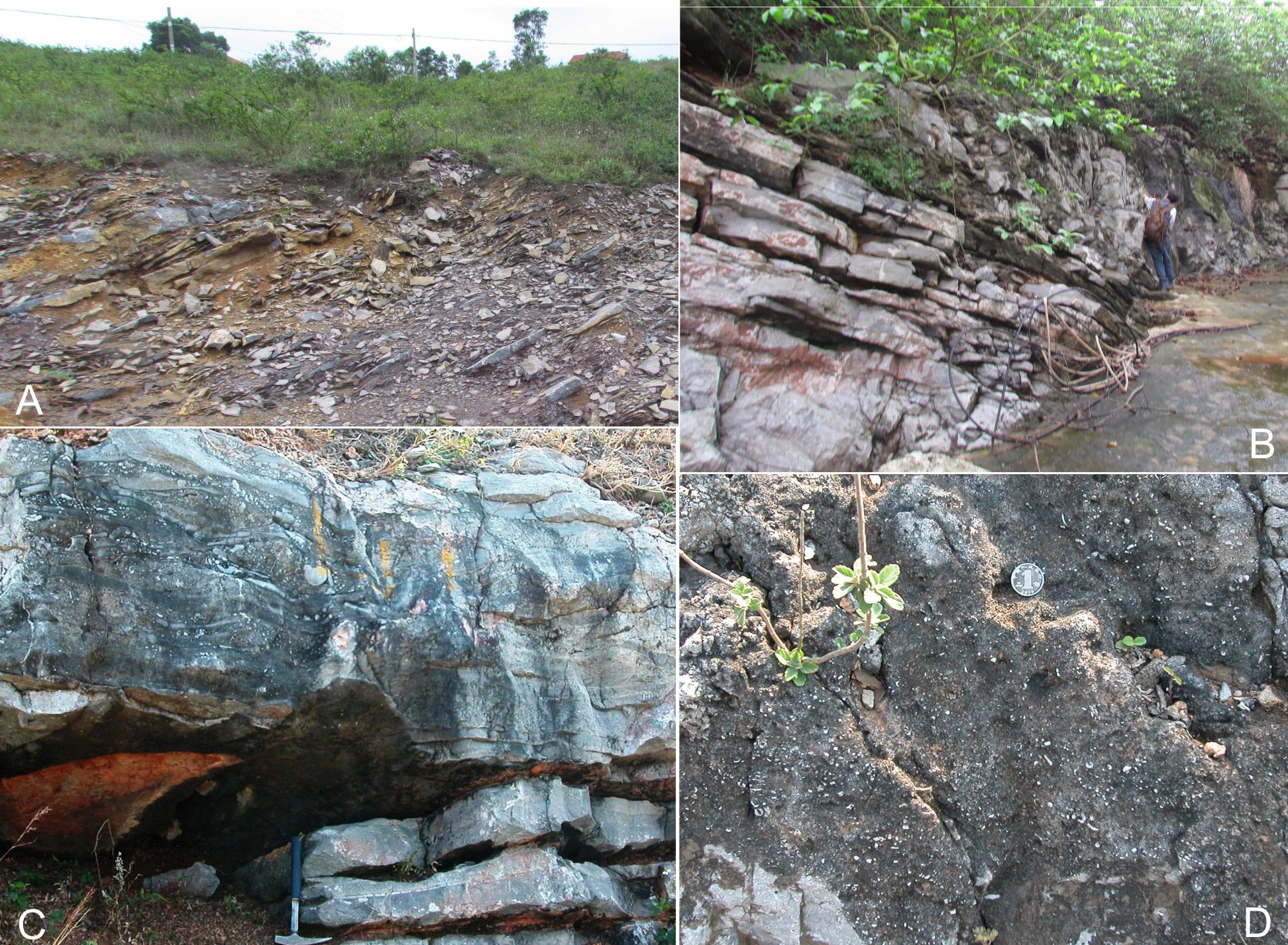Mintang Fm
Type Locality and Naming
The type section is located
at Liusengshan Hill of east of Liujing Industry Park, south of Liujing Railway Station in Hengxian County, Guangxi. It was named by Wang Yu, Yu Changmin and Fang Dawei in 1964.
Synonym: Mingtang Fm
[Figure Simplified geological map of Liujing area showing the location of type sections of some lithostratigraphic units (red lines) A-Nagaoling Fm, B-Yukiang Fm, C-Moding Fm, D-Najiao Fm, E-Mintang Fm and Gubi Fm.]
Lithology and Thickness
Limestone. It is composed of alternations of gray thin-bedded slab limestones and thick-bedded detrital and breccia limestones. The thin limestone are generally well-bedded, planar to lenticular bedding with, very often, undulate basal boundaries, yielding brachiopods and tentaculites. The thick limestone contains global stromatoporoids and corals which are preserved in form of gravel shape. The normal graded bedding, sliding and slump structures are frequently developed. A few reef organic debris and carbonate debris are observed. It is 88 m thick.
[Figure: Outcrops of the Mintang Formation in the stratotype locality of Liujing. A-Thin slab limestone containing brachiopods and tentaculites, B-the alternating thick- and thin-bedded units in the top of the formation, C-Sliding and talus limestone sediments, with irregular shaped and various sized breccia, D-Crinoidal and tentaculite limestone. Length of hammer 33 cm and diameter of coin 1.9 cm.]
Relationships and Distribution
Lower contact
The 40-cm-thick crinoidal-tentaculite limestone at the base of the Mintang Fm is separated from the underlying dolomite of the Najiao Fm by a bed of 1-4-cm-thick hematite-bearing marl, which may represent an erosion break surface; therefore, there must be disconformable contact relationship between these two formations.
Upper contact
The formation is overlain by the Gubi Fm with conformable contact. The chronological boundary between Givetian and Frasnian is located at topmost thick-bedded limestone defined by conodonts.
Regional extent
The Mintang Fm is restrictively distributed in Nandan-Hechi, Guilin-Yansuo-Hexian and Nanning-Wuming-Hengxian areas.
GeoJSON
Fossils
The formation yields abundant fossils, including the following important elements: Stromatopora Actinostroma sp.; Brachiopods Stringocephalus burtini, Acrothyris kwangsiensis; tentaculites Nowakia otomari; Tetracoralla Stringophyllum sp., Grypophyllum sp. and Conodonts of Tortodus kockelianus zone to Polygnathus a. asymmestricus zone.
Age
Depositional setting
It is interpreted as a platform margin or upper slope facies environment. Allochthonous carbonate debris deposits indicate a fore reef setting.
Additional Information

